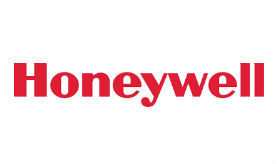North America is set to be the bright spot in the civil helicopter market in the coming years, with Latin America on the other end of the scale, according to Honeywell’s new “Turbine-Powered Civil Helicopter Purchase Outlook.”
A projected 4,000 new civilian-use helicopters will be delivered worldwide from 2019 to 2023, slightly down on the 4,200 cited in last year’s five-year forecast, Honeywell stated on March 4. Overall, 15.1 percent of operators surveyed said they expect to acquire at least one new helicopter over the next five years, compared with more than 18.6 percent last year, said Gaetan Handfield, senior manager for marketing analysis at Honeywell.
The survey of operators was conducted from December 2018 to the beginning of February. Honeywell interviewed about 1,000 operators with a combined fleet of 3,330 turbine-powered helicopters, or around 13 percent of the global fleet, said Handfield.
The picture varies considerably depending on the region in question, Handfield told Vertical. In North America — which represents about 40 percent of the worldwide helicopter market — purchase plans for the five-year period have increased from 13 percent in 2018 to 18 percent this year. The Middle East and Africa is also up, with 15 percent of respondents there anticipating new acquisitions by 2023, compared with 10 percent last year.
However, Latin American respondents “see a significant drop in purchasing plans,” Handfield said, plummeting from 35 percent in 2018 to just nine percent now. Europe is also down, from 22 percent to 15 percent, while Asia has fallen from 18 percent to 13 percent.
Handfield said it is important to consider the timeframe in which operators plan to make their purchases within the five-year window, as this is an indication of the current level of confidence in the market. Again, the results vary widely. About 43 percent of purchase plans in North America were expected to occur in the first two years of the period. But in Latin America, just 21 percent were expected to take place in these years.
“Not only is this region lower overall, but it is very pessimistic and conservative when it comes to purchase plans this year,” Handfield said.
While the forecast for new deliveries is somewhat down, it would still represent an increase on the numbers recorded in the five years to 2019, he added. Deliveries of 4,000 new civil helicopters by 2023 would be an increase of about 15 percent on the previous five years, when the market was reeling from the crash in oil and gas prices. Honeywell expects an average annual growth rate of three to four percent in the period, with deliveries supported by a production ramp-up of new models. It believes that more favorable exchange rates and improved oil prices could boost the market in years four and five, Handfield noted.
Light, single-engine helicopters are the most popular class, making up 51 percent of planned purchases, compared with 48 percent last year. Intermediate and medium twin-engine helicopters were up by four percentage points to 31 percent, while light twins fell by seven percentage points to just 13 percent this year. Heavy helicopters remain steady at five percent of planned purchases.
In terms of usage, it was bad news for the corporate and private domain, with a fall of seven percentage points to 19 percent of planned purchases. The long-suffering oil and gas sector saw a rise of three percentage points, to 10 percent, which Handfield said is largely being driven by demand in the Middle East and Africa. Law enforcement recorded a significant boost, from 15 percent to 20 percent, while emergency medical services and search and rescue are steady at 21 percent of planned usage. The remaining 30 percent is taken up by general utility and other work.
Honeywell asked the operators to outline their planned utilization rates over the next year. Overall, 14 percent of users expect their platforms to fly more hours in 2019 compared with 2018. However, this once again changed depending on region: in North America, the figure is well above the global level, at 20 percent.
When it comes to model choice, 92 percent of operators point to brand as their major reason for acquiring a platform, a jump on the 72 percent recorded last year. Cabin space was cited by 34 percent of all respondents, while payload was number three at 31 percent. Customer support is also key, rising from 25 percent to 30 percent.
Although the projection is slightly more pessimistic than last year, Honeywell pointed to the continuing expectations for growth as reason to be positive.
“Despite respondents having a slightly less positive view of the global economic outlook in this year’s survey compared with 2018, new helicopter platforms will support an expected three to four percent annual growth rate in overall deliveries,” it said. “The predicted increase in deliveries signals an overall healthy helicopter market poised for moderate growth.”









